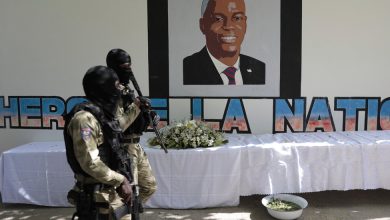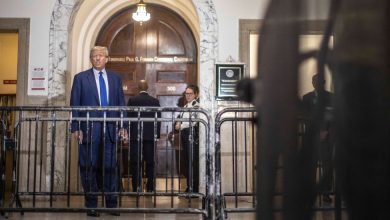Is This the New Cocktail Capital of Europe?

In April 1929, the Orient Express train from Paris pulled into Belgrade, as it did regularly on its way to Constantinople. But this was no ordinary day in the capital of what was then called the Kingdom of Serbs, Croats and Slovenes. At the train station, a crowd awaited a well-known passenger, the African American entertainer Josephine Baker, who would spend a few days performing and reveling in this Slavic city of about 240,000 people. Belgrade knew how to show visitors a good time, thanks to its fashionable, somewhat raucous nightclub and bar scene.
One of those bars was in the Hotel Srpski Kralj in central Belgrade. It was here in the early 1920s that the bartender Milan Vujic created what is often cited as the first Serbian cocktail when he combined a juniper-flavored plum brandy and soda water and called it the kleka soda. Baker would have encountered it on the Orient Express cocktail menu.
A decade later, the debauchery of Belgrade’s nightlife would dry up, thanks to World War II, followed by the Socialist period from 1945 to 1992, and then the Balkan wars, which included the NATO bombings of Belgrade in 1999.
But in the 10 years or so, something has changed: The capital of Serbia, now with a population of about 1.37 million, has become awash in excellent watering holes, quietly developing into one of the best cocktail-bar cities in Europe. Foreign visitors have begun to gravitate here to sample both classic and cutting-edge cocktails in intimate bars — in contrast to the rowdier scene about a century ago when people like Josephine Baker were coming here to let their hair down.
On my most recent trip to Belgrade, I sought out some of the city’s best bars — and bartenders.

The Belgrade bar Hanky Panky, which opened in 2021, drew a stylish crowd on a recent Saturday night.Credit…Marko Risovic for The New York Times
Hanky Panky
It took a few seconds for my eyes to adjust to the dimly lit Hanky Panky, a 24-seat bar that opened in 2021. Candles and lights with lampshades in the shape of corsets radiated from the corners of the room. Speakers seeped classic blues tunes.
Hanky Panky has a cocktail menu, but like many bars in Belgrade, bartenders improvise based on each customer’s taste. I wanted something classic, and a few minutes later the owner and head bartender, Miroslav Popov, placed a gin fizz in front of me, made with the excellent Serbian Young Salt gin.
When I told him I was from New York City, he asked in a hushed tone, “Do you know Employees Only?”
Employees Only is a speakeasy-style bar in the West Village that opened in 2004; in 2015 it ascended to No. 4 on the World’s 50 Best Bars list. One of its co-founders is the Belgrade-born bartender Dushan Zaric. Some 4,500 miles away in his hometown, Mr. Zaric has become a local hero.
I told the mustachioed bartender that I lived around the corner from Employees Only. “Come here,” Mr. Popov urged, waving me behind the bar. There, on the back counter under a shelf of bottles, and lit by a single candle, was a tribute to the New York bar: a matchbook, a napkin, a pen and a photo of the bar’s founders, all branded with the logo. Then he pointed out the curved shape of the oak-and-metal counter. “It’s a replica of the Employees Only bar,” he said, noting that the bartenders at Hanky Panky wear the same outfit as their counterparts in New York: white shirt, black tie and vest.
Hanky Panky, Kapetan-Misina 2, cocktails around 800 dinars, or about $7.30.
Riddle
“When we were young, we all wanted to be Dushan,” said 32-year-old Milos Stefanovic, the owner of Riddle bar, referring to the Employees Only co-founder.
Mr. Stefanovic and I began chatting the second I plopped on a stool at the dark-wood bar in Skadarlija, a charming central neighborhood. Why, I asked, is the Belgrade bar scene so great? “We all have a common goal of putting Belgrade on the cocktail map,” Mr. Stefanovic said. And when he said “we,” he meant most of the bar owners and bartenders here. They’re all rooting for one another.
“There is no stigma about asking each other where they got a certain spirit or about a new technique,” said Lazar Ruzicic, the main bartender.
At Riddle, there is no printed menu. Instead, the bartenders mix up drinks based on what they think you might like, even going so far as to include ingredients like corn, miso or even traditional Italian pesto. As James Brown played in the background, I admired the framed album covers — everything from Elvis Presley to REO Speedwagon. That’s when I saw Mr. Ruzicic rubbing the ends of his waxed mustache and sizing me up.
“You look like a Negroni guy,” he said. I nodded and he went to work, adding some Vinjak, a sort of Balkan cognac made from grapes, some homemade bitters and honey into a beaker along with burning cedar sticks until it was nebulous with smoke. Minutes later, I was sipping a drink that was equal parts smoky, bitter and slightly sweet. “It’s my take on a Boulevardier,” he said. I loved it.
Riddle Bar, Skardarska 9, cocktails around 1,000 dinars.
Bar Central
Bar Central, in the stylish Upper Dorcol district, is often boisterous, with people elbow to elbow on stools around the U-shaped bar, or lounging on the banquettes.
I was staying across the street, and I often began my evenings there, chatting with the owner, Damir Miladin, and the bartender Rasha Hindawi, who is also the co-owner and bartender at another establishment called Lenja Buba. In 1997, the two founded the Bartenders Association of Serbia, which trains bartenders and helps them find jobs.
As I sipped on a Bar Central Delight — a mix of vodka, rakia (a local brandy, this one made with apples and rose petals) and lychee liqueur — Mr. Hindawi conjured the past. “During the wars of the ’90s, a lot of people fled,” he said. “They came back around the beginning of the next decade, some of whom had worked in bars in London and New York, and were highly educated and skilled in making cocktails.”
Mr. Miladin interjected: “That’s when I realized that we have all this talent here now, so maybe we should open a bar.” Bar Central opened in 2005. “I’d say that about 80 percent of the bartenders in Belgrade started at Bar Central,” he said, thanks in part to the training and apprenticeship program that they still do at the bar.
Bar Central, Kralja Petra 59, cocktails around 600 dinars.
Druid Bar
Around the corner, hidden down an alley, is Druid Bar. When you find the door, you’ll see a note affixed to it that says, in Serbian and English, to call a number and someone will let you in.
Inside, a dark room is bedecked with stained-glass lamps and decorative plates. The curvy bar with about 10 seats, a bartender there told me, is also a tribute to Employees Only in New York.
Bartenders will hand you a seasonal two-page menu of signature drinks or riffs on classics, such as the Viquiri (Viljamovka rakia, white rum and lime juice) and the Haze Collins (gin, green Chartreuse, orange juice, simple syrup and basil). Or they’ll mix something special for you, which will most likely arrive in a thick glass tumbler that would be worthy of a photo — if the bar didn’t forbid taking pictures.
Druid Bar, Cincar Jankova 1, cocktails around 700 dinars.
Kultura Bar
At Kultura Bar in the Vracar neighborhood, Juraj Kozma, a co-owner, asked what I wanted and I pointed at the bottle of Becherovka, a Czech digestif. A minute later a highball glass arrived: Becherovka with apple liqueur, lime juice and simple syrup. It was an ideal mixture to counter Becherovka’s herb-heavy flavor.
I was perched at the bar, a wooden and glass structure filled with tchotchkes, along with a young, mostly local crowd sipping dirty martinis and fruit-laden cocktails. On one wall, a framed black-and-white photo showed Elizabeth Taylor with Josip Broz Tito, the longtime leader of Yugoslavia.
“We opened in 2012 and were the first bartender-owned cocktail bar in Belgrade,” Mr. Kozma said. It was also around this time that the ingredients and spirits that had been lacking in Belgrade became readily available. “Then around 2018 or 2019, more bartenders opened their own bars here too — Riddle Bar, Druid Bar, Lenja Buba, Bitters Bar, Hanky Panky, Barblija,” he said, counting off on his fingers. “This helped create a critical mass, and the bar scene here went to the next level.”
As I chatted with bartenders, the word “hospitality” kept coming up. Mr. Kozma said it best: “Our sense of hospitality goes back to the home. When a guest comes over, we literally take everything out of the fridge and put it on the table for them,” he said. I can testify to that, having been a guest in several Serbian homes.
But Mr. Kozma put forth an addendum: “There is only so far great hospitality can get you,” he said. “You also have to be good at making cocktails.”
Kultura Bar, Kralja Milutina 4, cocktails around 700 dinars.
Beogradski Koktel Klub
Around 11:30 one night, I rang the buzzer outside Beogradski Koktel Klub, a speakeasy-style bar where Old Town and Dorcol meet. A darkened window next to the door slid open, and the co-owner and bartender Filip Ivanovic poked his head out. He smiled and slammed the window shut, and the door creaked open. “Hey brother!” he said to me. It was only my second visit, but here again was that Serbian hospitality.
On my first visit I had tried a kleka soda, and I wanted to see what else he could mix with rakia. Mr. Ivanovic set down a tumbler of gin, pear rakia, pear cordial, elderflower liqueur, grapefruit juice and soda water. “If Italians have Campari and amaro, Americans have bourbon, Caribbeans have rum, we have rakia,” Mr. Ivanovic said.
The narrow, 16-seat bar, which opened in 2017, feels like a private club. With jazz in the background, Mr. Ivanovic and his brother Uros Ivanovic chat with regulars. Filip is passionate about the history of cocktails, and often evokes Mr. Vujic, the 1920s Belgrade bartender. The bar even has a collection of old cocktail books, including a reprint of the 1927 “Barflies and Cocktails: 300 Recipes,” by Harry McElhone of Harry’s New York Bar in Paris.
One night, Mr. Ruzicic from Riddle Bar was there and we started discussing the future of the Belgrade bar scene. Before I took my last sip, he said, “Now that I’ve reached a certain level of success in the bartending world here, people often ask me if I’m ready to move to a place like New York or London.” But why, he asked, “would I want to go anywhere else? We are living in the golden age of cocktail bars in Belgrade right now.”
Beogradski Koktel Klub, Uzun Mirkova 7, cocktails around 1,000 dinars.
Follow New York Times Travel on Instagram, Twitter and Facebook. And sign up for our weekly Travel Dispatch newsletter to receive expert tips on traveling smarter and inspiration for your next vacation. Dreaming up a future getaway or just armchair traveling? Check out our 52 Places to Go in 2023.




